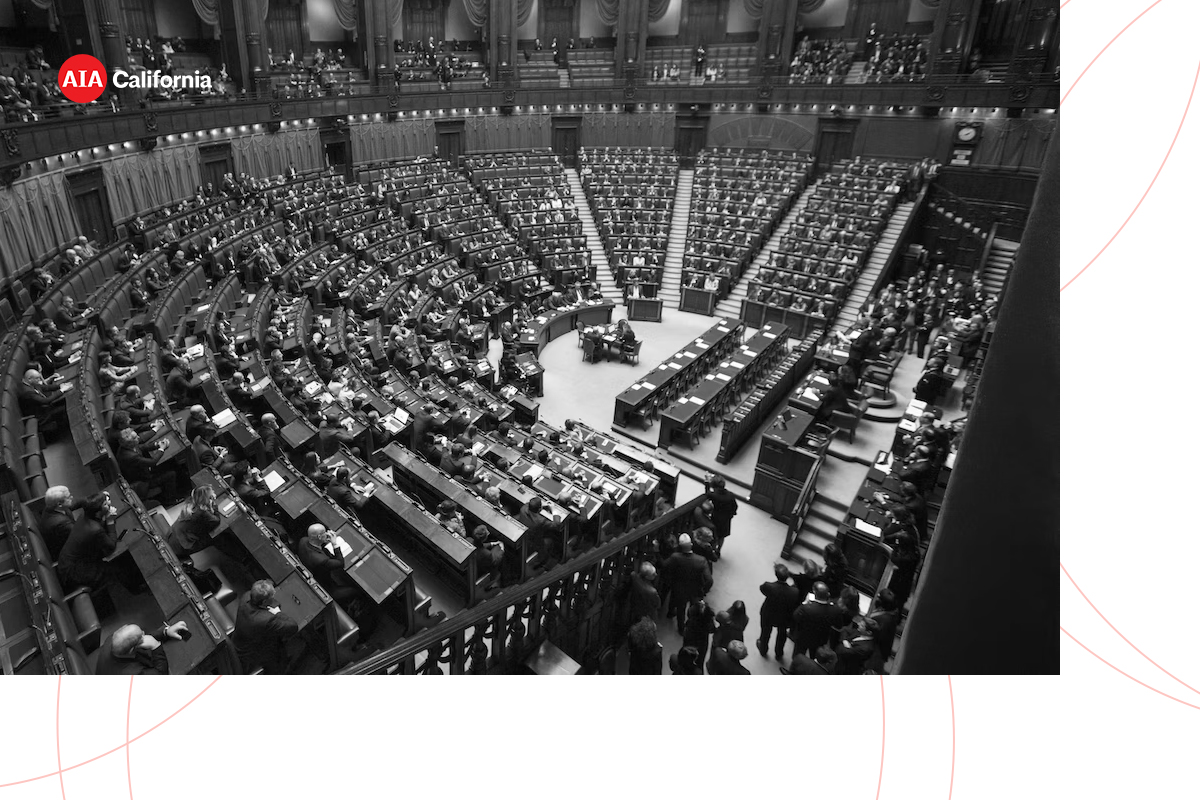
(December 16, 2022) 2022 was a big year for the American Institute of Architects California, with significant victories for the profession in the advocacy arena. Below are the top six achievements accomplished through the efforts of AIA CA members and staff:
California has, in recent years, taken several steps to reduce our greenhouse gas emissions, and is in the process of considering additional steps, including improved codes and standards for buildings. AIA California agrees that buildings codes and standards must continue to improve to reduce the impact buildings have on our environment.
Improving the performance of buildings requires that architects – the designers of buildings – have the knowledge to design buildings according to changes to the building codes and standards and, importantly, how to design high-performing Zero Net Carbon buildings.
As part of the negotiations for this proposal, AIA CA agreed to offer these courses free of charge to all architects in California for the first 2-year cycle. As a result of great staff work, this year AIA CA offered 17 ZNCD courses with an average attendance of 378 attendees, with the highest attendance reaching 489 attendees! Special thanks to Frank Bostrom, AIA, Bill Burke, AIA, Sarah Vasquez, AIA CA Climate Action Coordinator, and Rebekah Aceves, AIA CA Professional Practice Program Coordinator, for all of their efforts that led to these successes.
Ms. Bernstein, using her expert knowledge of architectural documents, and Attorney Steven Weinberg, with Holmes Weinberg PC, using his expert knowledge of the Copyright Act, worked with AIA California staff to draft the language that became SB 1214.
SB 1214 allows architectural documents that express the scope of a project and do not contain information protected by the Copyright Act to be posted online by a planning department and copied. These documents are Site Plans and Massing Diagrams, which SB 1214 defines. Other architectural documents that contain protected information cannot be posted online or copied. These protected documents can be viewed by the public at the planning department and, of course, distributed to local government staff, advisory boards, and other decision makers.
While AIA CA fully supports the primary purpose of CCR 135, to protect the public, the way this proposed regulation was written was of great concern to our membership for a number of reasons. Read more here.
As you can see, 2022 has been a year filled with wins for our organization. None of this would be possible without our members and our dedicated staff. We look forward to building on these successes in 2023 and continuing to amplify the voice of the architectural profession.